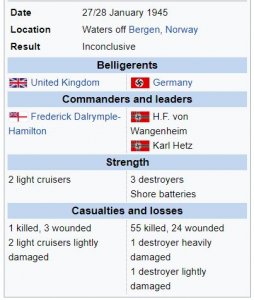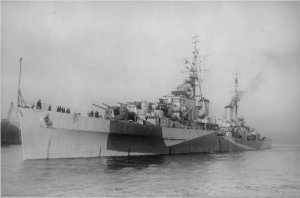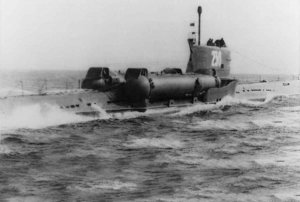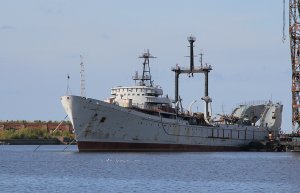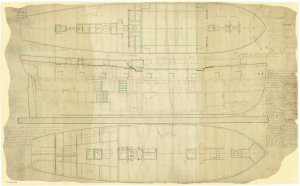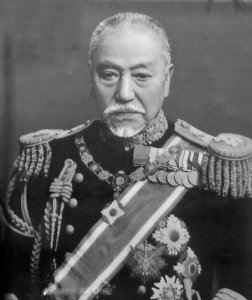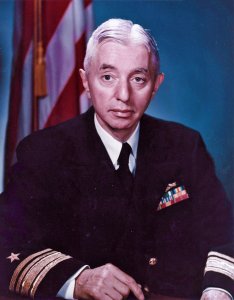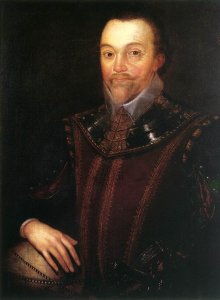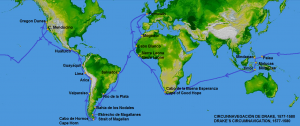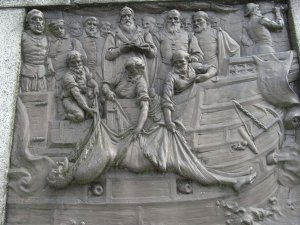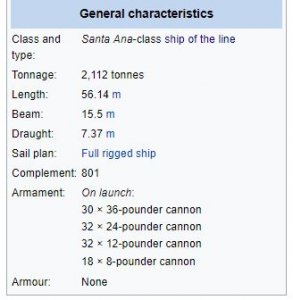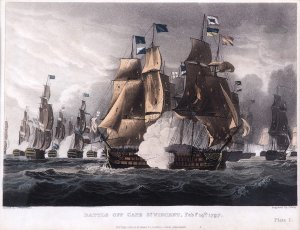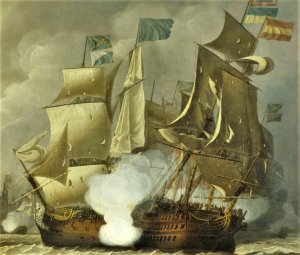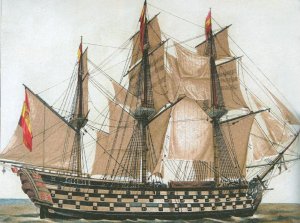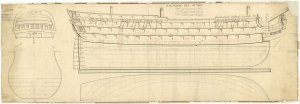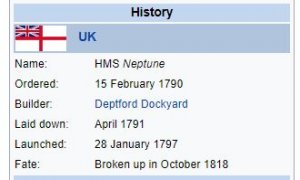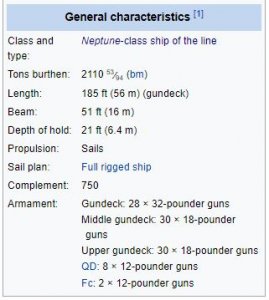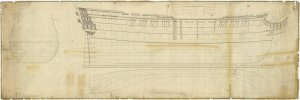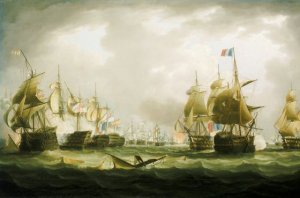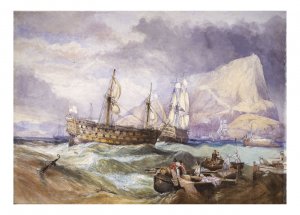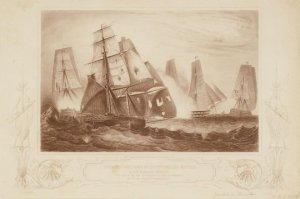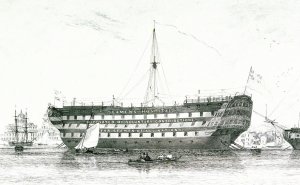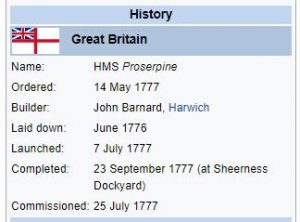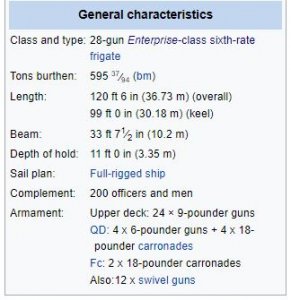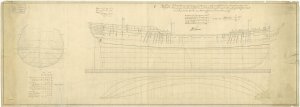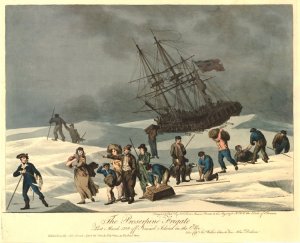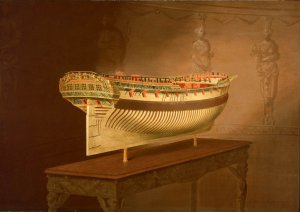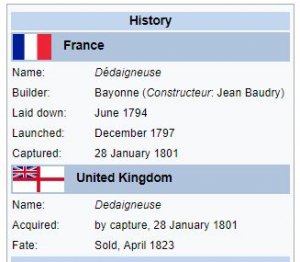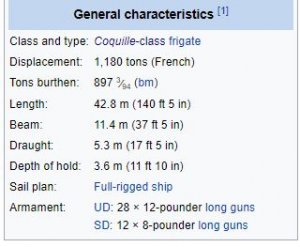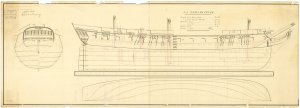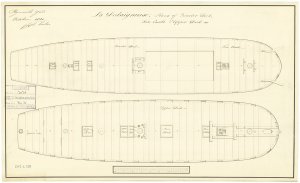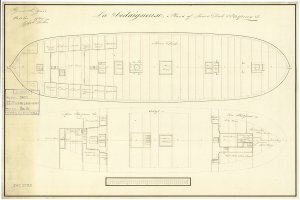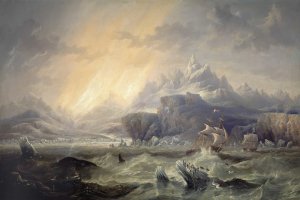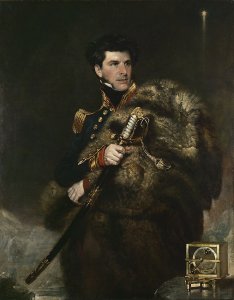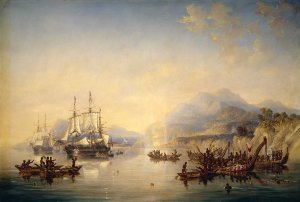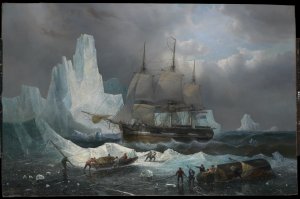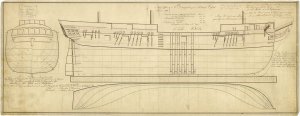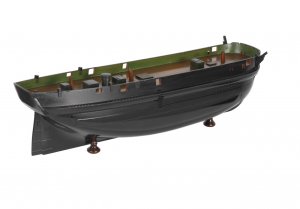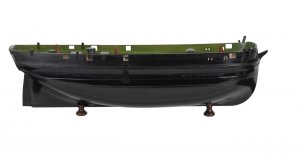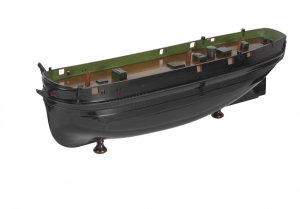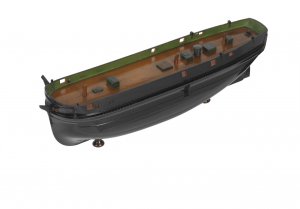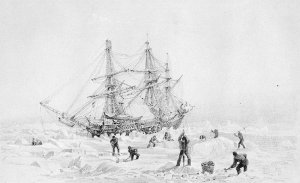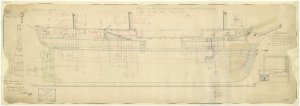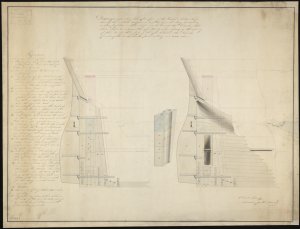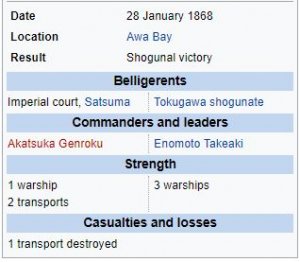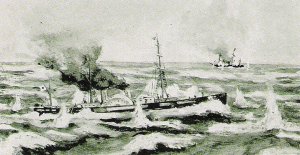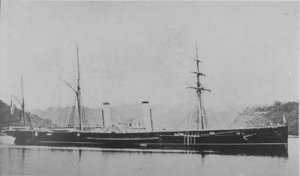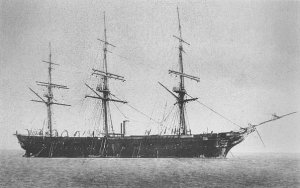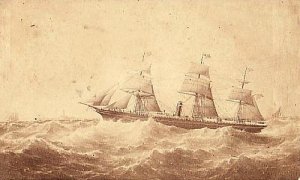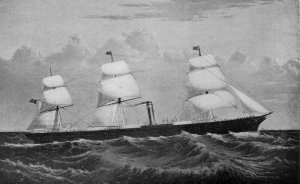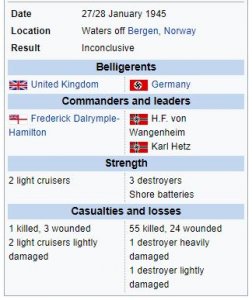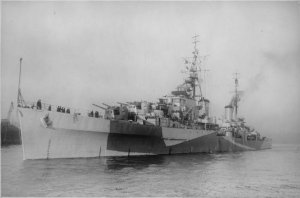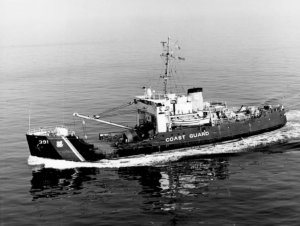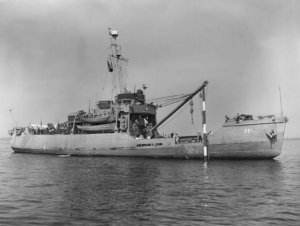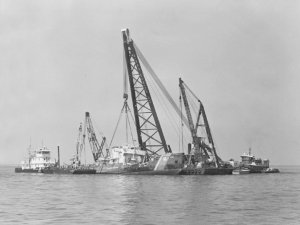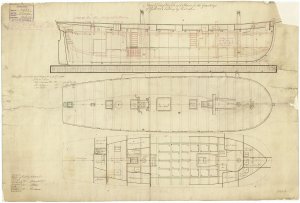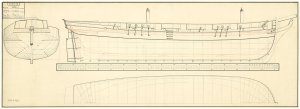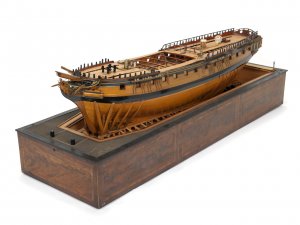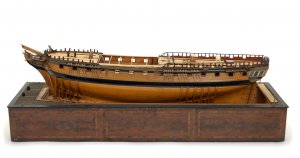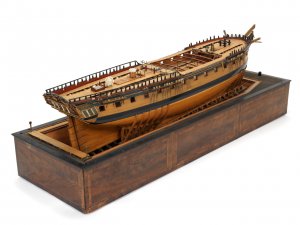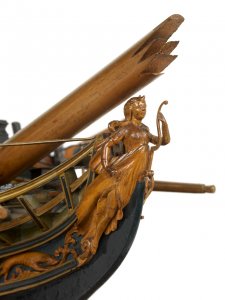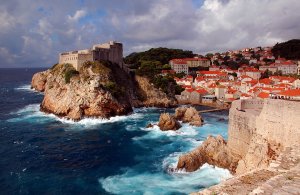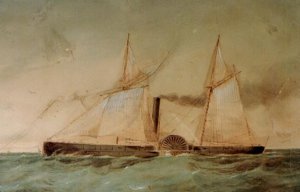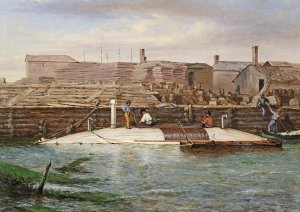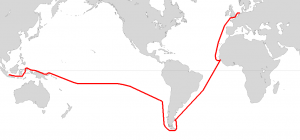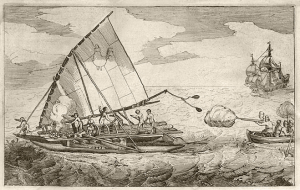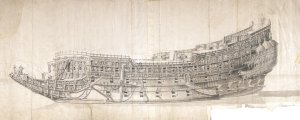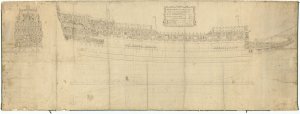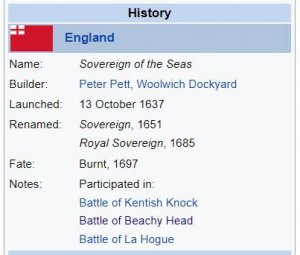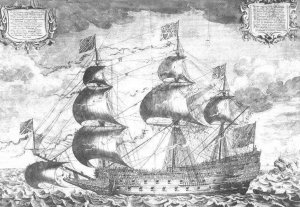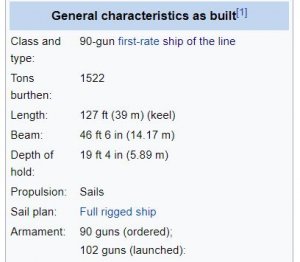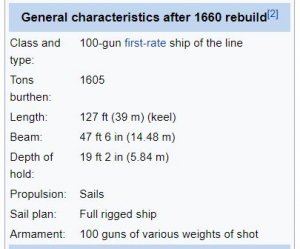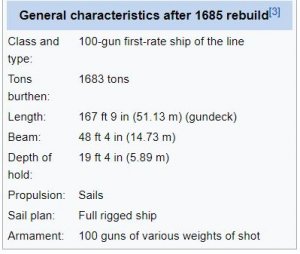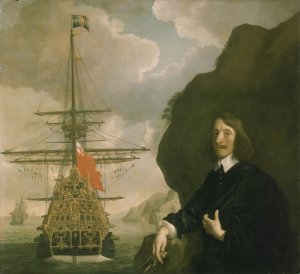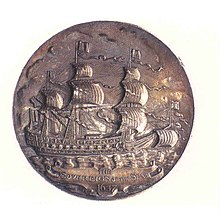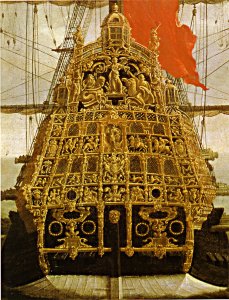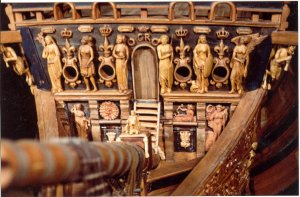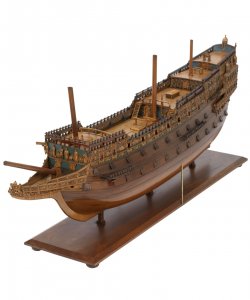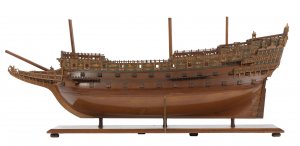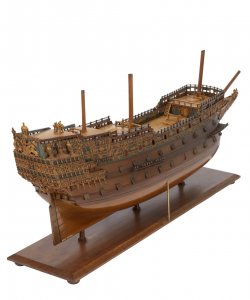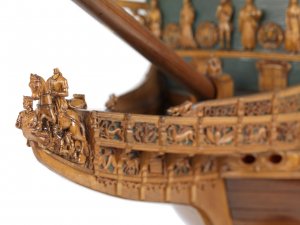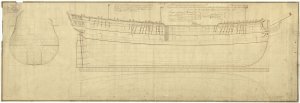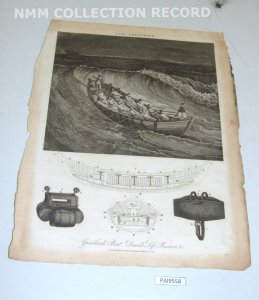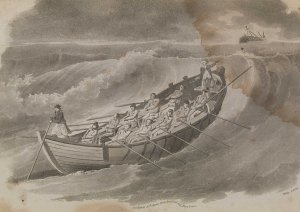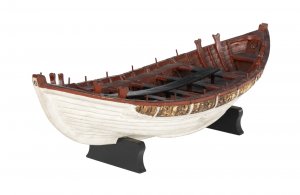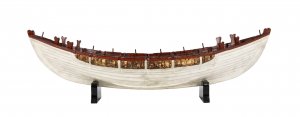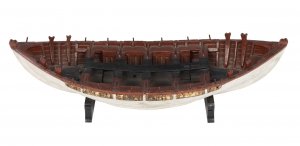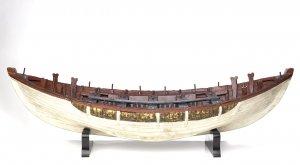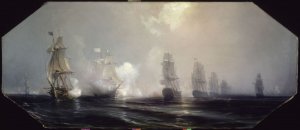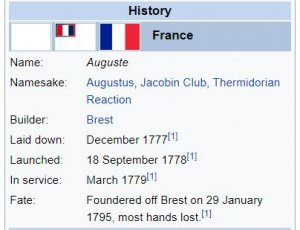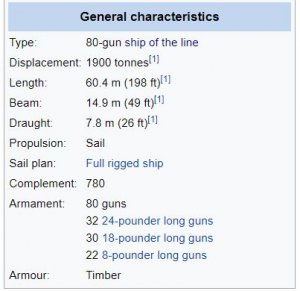Today in Naval History - Naval / Maritime Events in History
28 January 1946 - fishing and racing gaff rig schooner Bluenose wrecked near Haiti
Bluenose was a fishing and racing
gaff rig schooner built in 1921 in
Nova Scotia, Canada. A celebrated racing ship and fishing vessel,
Bluenose under the command of
Angus Walters became a provincial icon for Nova Scotia and an important Canadian symbol in the 1930s, serving as a working vessel until she was wrecked in 1946. Nicknamed the "
Queen of the North Atlantic", she was later commemorated by a
replica,
Bluenose II, built in 1963. The name
Bluenose originated as a nickname for Nova Scotians from as early as the late 18th century.
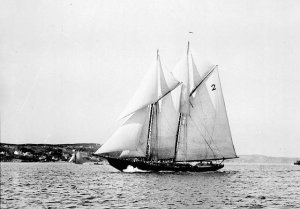 Bluenose
Bluenose sailing in 1921
Design and description
Designed by
William Roué, the vessel was intended for both fishing and racing duties. Intended to compete with American schooners for speed, the design that Roué originally drafted in Fall 1920 had a
waterline lengthof 36.6 metres (120 ft 1 in) which was 2.4 metres (7 ft 10 in) too long for the competition. Sent back to redesign the schooner, Roué produced a revised outline. The accepted revisal placed the inside ballast on top of the
keel to ensure that it was as low as possible, improving the overall speed of the vessel. One further alteration to the revised design took place during construction. The
bow was raised by .5 metres (1 ft 8 in) to allow more room in the
forecastle for the crew to eat and sleep. The alteration was approved of by Roué. The change increased the
sheer in the vessel's bow, giving the schooner a unique appearance.
The design, that was accepted and later built was a combination of the designs of both Nova Scotian and American shipbuilders had been constructing for the
North Atlantic fishing fleet. The vessel was constructed of Nova Scotian
pine,
spruce,
birch and
oak and the masts were created from
Oregon pine.
Bluenose had a
displacement of 258 tonnes (284 short tons) and was 43.6 metres (143 ft 1 in)
long overall and 34.1 metres (111 ft 11 in) at the waterline. The vessel had a
beam of 8.2 metres (26 ft 11 in) and a
draught of 4.85 metres (15 ft 11 in).
The schooner carried 930 square metres (10,000 sq ft) of sail.
Bluenose's mainmast reached 38.4 metres (126 ft 0 in) above
deck and the schooner's foremast reached 31.3 metres (102 ft 8 in). Her mainboom was 24.7 metres (81 ft 0 in) and the schooner's foreboom was 9.9 metres (32 ft 6 in). The vessel had a crew of 20 and her hull was painted black. The vessel cost $35,000 to build.
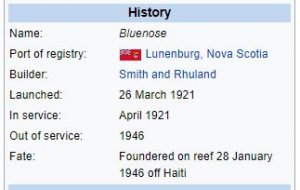
 Career
Bluenose
Career
Bluenose was constructed by
Smith and Rhuland in
Lunenburg, Nova Scotia. The schooner's keel was laid in 1920. The
Governor General the Duke of Devonshire drove a golden spike into the timber during the keel-laying ceremony. She was
launched on 26 March 1921, and christened by Audrey Smith, daughter of the shipbuilding Richard Smith. She was built to be a racing ship and fishing vessel, in response to the defeat of the Nova Scotian fishing schooner
Delawana by the
Gloucester, Massachusetts fishing schooner
Esperanto in 1920, in a race sponsored by the
Halifax Herald newspaper.
Bluenose was completed in April 1921 and performed her
sea trials out of Lunenburg. On 15 April, the schooner departed to fish for the first time.
Bluenose, being a Lunenburg schooner, used the dory trawl method. Lunenburg schooners carried eight
dories, each manned by two members of the crew, called dorymen. From the dories, lines of strong twine up to 2.5 kilometres (1.6 mi) long which had 0.91-metre (3 ft) lines with hooks on the end spaced every 3 metres (9.8 ft) were released, supported at either end by buoys which acted as markers. The dorymen would haul in the catch and then return to the ship. This was done up to four times a day. The fishing season stretched from April to September and schooners stayed up to eight weeks at a time or until their holds were full.
Bluenose's captain and part owner for most of her fishing and racing career was
Angus Walters. As Walters only had master's papers for home waters,
Bluenose in some international races was sometimes under the command of the deep sea Lunenburg captain George Myra until the schooner reached the racing port. The crew of
Bluenose during her fishing career were mostly from Lunenburg but also included several
Newfoundlanders. Crew were paid either by the size of the catch when they returned to port or some took a share in the vessel, known as a "sixty-fourth".
Racing
Bluenose vs.
Gertrude L. Thebaud, International Fishermen's Cup, 1938, final race
After a season fishing on the
Grand Banks of Newfoundland under the command of Angus Walters,
Bluenose set out to take part in her first
International Fisherman's Cup. The International Fisherman's Cup was awarded to the fastest fishing schooner that worked in the North Atlantic deep sea fishing industry. The fastest schooner had to win two out of three races in order to claim the trophy. The Canadian elimination race to determine who would represent Canada in the 1921 International Fishermen's Trophy race off
Halifax, Nova Scotia took place in early October. A best two-out-of-three competition,
Bluenose won the first two races easily.
Bluenose then defeated the American challenger
Elsie, for the International Fishermen's Trophy, returning it to Nova Scotia in October 1921. The following year,
Bluenose defeated the American challenger
Henry S. Ford, this time in American waters off Gloucester.
Henry S. Ford had been constructed in 1921 based on a design intended to defeat
Bluenose.
In 1923,
Bluenose faced
Columbia, another American yacht newly designed and constructed to defeat the Canadian schooner. The International Fishermen's Trophy race was held off Halifax in 1923 and new rules were put in place preventing ships from passing marker
buoys to landward. During the first race, the two schooners dueled inshore, the rigging of the vessels coming together. However,
Bluenose won the first race. During the second race,
Bluenose broke the new rule and was declared to have lost the race. Angus Walters protested the decision and demanded that no vessel be declared winner. The judging committee rejected his protest, which led Walters to remove
Bluenose from the competition. The committee declared the competition a tie, and the two vessels shared the prize money and the title. The anger over the events led to an eight-year hiatus in the race.
In 1925, a group of Halifax businessmen ordered the construction of a schooner designed to defeat
Bluenose.
Haligonian was launched that year and a race was organized between the two ships. However, while returning to port with her catch,
Haligonian ran aground in the
Strait of Canso. The vessel required repairs and the race with
Bluenose was cancelled. In 1926, a new race was organized, which
Bluenose won easily. A new American schooner was designed and built in 1929–1930 to defeat
Bluenose.
Gertrude L. Thebaud. She was the last schooner of her type constructed for the fishing fleet in Gloucester. In 1930 off Gloucester, Massachusetts,
Bluenose was defeated 2–0 in the inaugural
Sir Thomas Lipton International Fishing Challenge Cup. The second race was controversial, as it was called off due to weather issues both times
Bluenose took the lead. The following year,
Gertrude L. Thebaud challenged
Bluenose for the International Fisherman's Trophy.
Bluenose won handily, beating the American schooner in both races.
Fishing schooners became obsolete during the 1930s, displaced by motor schooners and trawlers.
Salt cod, the main fishing industry in the North Atlantic had been surpassed by the fresh fish industry requiring faster vessels. In 1933,
Bluenose was invited to the
World's Fair in
Chicago, stopping in
Toronto on her return voyage. In 1935,
Bluenose sailed to
Plymouth after being invited as part of the
Silver Jubilee of King
George V. During her visit, she took part in a race with schooner-
yachts, specifically designed for racing.
Bluenose came third. On her return trip to Nova Scotia,
Bluenose encountered a strong gale that lasted for three days. Enough damage was done to the schooner that
Bluenose was forced to return to Plymouth to effect repairs. She was made seaworthy enough to sail to Lunenburg where further repairs were done. In 1936,
Bluenose had
diesel engines installed and topmasts removed to allow the schooner to remain on the fishing grounds year-round.
In 1937,
Bluenose was challenged once more by the American schooner
Gertrude L. Thebaud in a best-of-five series of races for the International Fisherman's Trophy. However, the financial difficulties of the owners of
Bluenose almost prevented the race from going ahead. Furthermore,
Bluenose's sailing gear had been placed in storage after the schooner had been refitted with diesel engines. It was only with the intervention of American private interests that
Bluenose was made ready for the race. Beginning on 9 October 1938, the first race, off
Boston, was won by
Gertrude L. Thebaud.
Bluenose won the second which was sailed off Gloucester, but a protest over the ballast aboard
Bluenose led to modifications to the schooner. She was found to be too long at the waterline for the competition. The alterations completed,
Bluenose won the third race sailed off Gloucester, by an even greater margin than the second race. During the fourth race sailed off Boston, the topmast of
Bluenose snapped, which contributed to
Gertrude L. Thebuad's win. The fifth race, sailed off Gloucester was won by
Bluenose, retaining the trophy for the Nova Scotians. This was the last race of the fishing schooners of the North Atlantic.
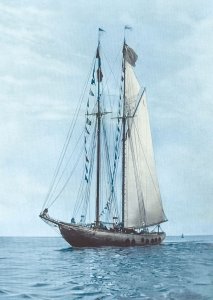 Coastal trade and fate
Coastal trade and fate
During World War II,
Bluenose remained at dock in Lunenburg. No longer profitable, the vessel was sold to the
West Indies Trading Company in 1942. The vessel was once again stripped of masts and rigging and converted into a coastal freighter for work in the Caribbean Sea, carrying various cargoes between the islands. Laden with bananas, she struck a coral reef off
Île à Vache, Haiti on 28 January 1946. Wrecked beyond repair, with no loss of life, the schooner was abandoned on the reef. The vessel broke apart on the reef.
Various divers and film makers have claimed to have found the wreck of
Bluenose, most recently in June 2005 by divers from the Caribbean Marine Institute searching for
Henry Morgan's ship
HMS Oxford. However, the large number of wrecks on the reef at Île à Vache and the scattered condition of the wreckage has made identification difficult.
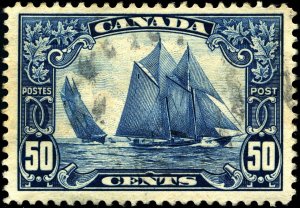 https://en.wikipedia.org/wiki/Bluenose
https://de.wikipedia.org/wiki/Bluenose
http://modelshipbuilder.com/page.php?41
https://en.wikipedia.org/wiki/Bluenose
https://de.wikipedia.org/wiki/Bluenose
http://modelshipbuilder.com/page.php?41